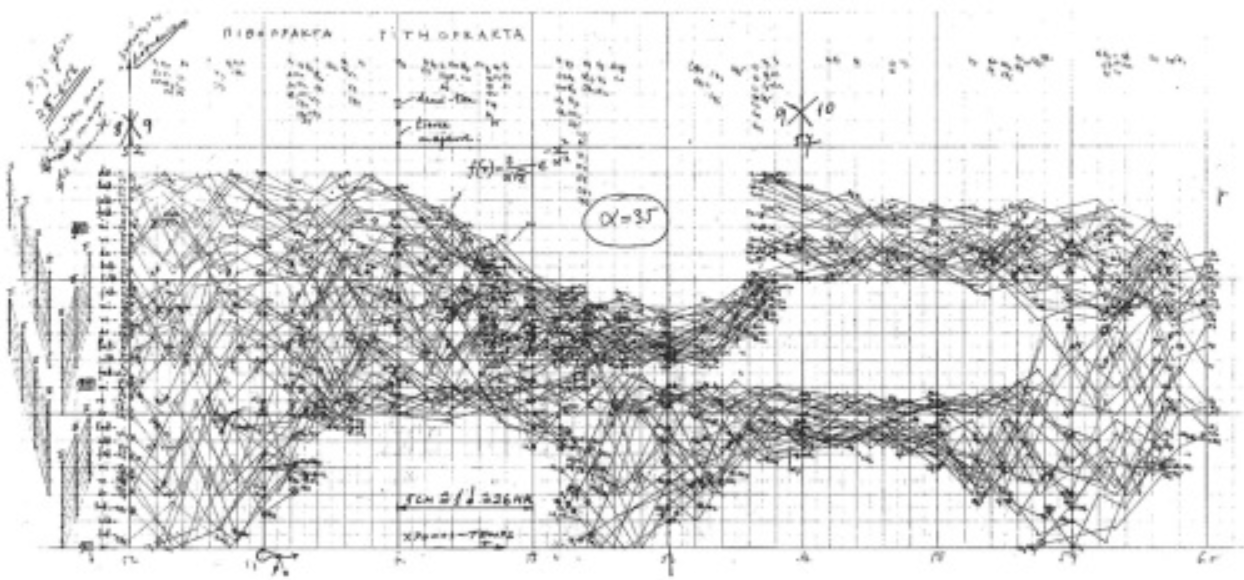By Maxwell Wilkens
Electronic music, and the computer software used to compose it, has come a long way in the last five decades, says Curtis Roads, a professor and chair of the Media Arts and Technology department at UC Santa Barbara.
While studying at UC San Diego in the ‘70s, Roads had to use a program on the university’s main computer to compose the music that interested him. “Every time I ran this program it cost about $75,” he told a UC Santa Barbara audience last week. “Today, when we have our laptops, we can run a program a hundred times, debug it in one day. With this program, I was only able to run it a handful of times total.”
Roads presented an afternoon lecture in the music building’s Studio Xenakis on Friday, in which he recalled his decades-spanning career in electronic music composition and music software development. The event was a part of the Corwin Concert and Lecture Series put on by the Music Department, and was moderated by João Pedro Oliveira, who is the chair of the composition program at UCSB.
Roads started his career in composition by coding complex computer algorithms, which would turn a series of equations and numbers into electronic music. He said that the algorithm he developed for his undergraduate honors thesis was particularly complicated because it “listens to its own output, but also it listens to the way that it listens, and it listens to the way that it listens to the way that it listens.”
The score for the piece “Pithoprakta” by Iannis Xenakis, who was a major influence on Curtis Roads, chair of UCSB’s Media Arts and Technology progam. Xenakis preferred to write music using “the mathematics of probability to control ‘clouds’ of events," rather than by writing individual notes, Roads said.
The algorithmic honors thesis piece premiered to an international audience. “It was the worst thing I’d ever heard,” Roads said. “And it changed my life, because at that point I abandoned electro-algorithmic composition. I decided that I was really more interested in beautiful sounds than in beautiful algorithms.”
Roads decided to compose what he described as “intuitive” music after this critical moment. “I don’t want to be limited to this thing,” he said, picking up his computer. The “kitchen sink” or “whatever works” approach to composition, he said, allows him to use non-computer sounds in his work, such as microphone and tape recordings.
Roads played three “intuitive” works for the UC Santa Barbara audience that took inspiration from many areas of life. “Bubble Chamber” was inspired by a device that records the movement of electronically charged particles, while “Nuage Gris” was based on an ambivalent state of mind that was hard to describe with words alone. “Modulude,” on the other hand, experimented with a variety of electronic music techniques.
A picture of electronically charged particles made by a device called a “Bubble Chamber.” Images like this were the inspiration for Curtis Roads’ recent composition of the same name.
Roads said that leading the MAT program has meant less time for composing. “I was appointed chair of Media Arts and Technology, and that, as I knew it would, has a severe impact on creative projects,” Roads said. Even with a busy schedule, Roads was excited to announce he has two new compositions underway, titled “Epic” and “Greenhouse.”
Roads ended his talk by warning the audience about the future of computer music, which may threaten originality. There are new algorithms that can listen to Bach chorales and Beethoven symphonies and produce music in their exact styles. “But what does it mean?” he said. “If you’re just going to go out and write in someone else’s style, that’s not the way to succeed as a composer. The goal is to create your own style.”
Maxwell Wilkens is a third-year UC Santa Barbara student majoring in Communication and Music Studies. He is a Web and Social Media Intern for the Division of Humanities and Fine Arts.




